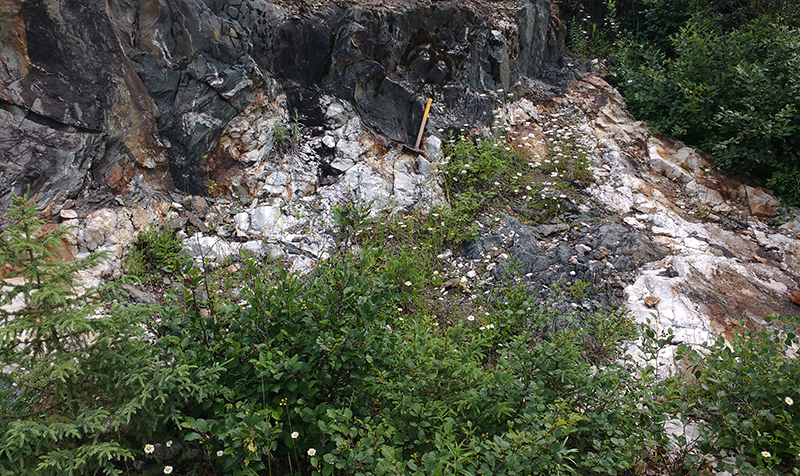Prosper Gold prepares for Cyprus Project drilling, British Columbia

Prosper Gold Corp. [TSXV: PGX; OTCQB: PGXFF] reported that crews and equipment have been mobilized to the company’s Cyprus Project in north-central British Columbia, Canada, to prepare access trails and drill pads for a diamond drilling program to be completed over the coming weeks.
The Cyprus Project is a district-scale porphyry copper-gold project with several historically defined copper ± gold porphyry prospects and significant historical drill results including 138.2 metres at 0.55% copper.
“Crews are currently constructing access trails and drill pads for this highly anticipated winter diamond drilling program,” commented Peter Bernier, CEO. “We are very excited to drill test Target A. It is a two- by four-km conductivity anomaly adjacent to a regional fault that coincides with a pronounced magnetic low, representing a very attractive porphyry target.”
Numerous multi-kilometre sized porphyry copper-gold targets were outlined from the Company’s summer 2024 ZTEM survey results, including Target A. Target selection was largely based on the coincidence of conductivity highs and magnetic lows, interpreted to be associated with high-level porphyry mineralization and alteration. Target A is characterized as a two- by four-kilometre conductivity high anomaly that extends from just below surface to depth of greater than 500 metres.
This large, pronounced conductivity high anomaly is spatially coincident with a two- by three-km magnetic low anomaly that is interpreted to be associated with the intrusion of Eocene-aged, Kastberg Suite or Babine Intrusive Suite felsic rocks, both of which have been mapped by government geologists within 3 km of the covered target. These Eocene-aged intrusions are known to be associated, in certain instances, with porphyry copper±gold mineralization in this region of the Stikine Terrane.
The road-accessible, 623 km2 Cyprus Project includes the historical Kaza and Northstar copper prospects and represents a district-scale copper-gold porphyry exploration project.
At the historical Kaza copper-gold prospect, soil samples up to 5.09 g/t gold and 10,000 ppm copper and surface rock chip samples from 1973 including 0.88% copper, 15.4 g/t gold and 120 g/t silver over 4.0 metres coincide with a 2,000 by 600-metre area of high IP chargeability and low magnetic response. The presence of sparse feldspar porphyry dikes and the sulphide assemblages present at surface suggest copper-gold porphyry mineralization may improve at depth.
Copper mineralization at the Northstar prospect consists of vein-hosted and disseminated chalcocite and bornite within faulted and fractured andesite. Surface trench sampling results includes 23.0 metres grading 2.1% copper and historical drilling intercepts include 0.55% copper over 138.2 metres. Zones of copper mineralization outlined by previous operators at the Northstar prospect are likely driven by a magmatic-hydrothermal system in the immediate vicinity.
The Big-Time prospect has not seen historical drilling despite the presence of a pronounced copper-bearing area of phyllic alteration that coincides with strong copper-molybdenum geochemistry, high IP chargeability and northeast trending feldspar porphyry dikes.
A heli-borne ZTEM (z-axis tipper electromagnetic) geophysical survey comprising 3,760 line-km was completed over the entirety of the Cyprus Project in summer 2024. Numerous porphyry copper±gold exploration targets were outlined, including Target A, which is characterized as a 2 x 4 km conductivity high anomaly coincident with a 2 x 3 km magnetic low anomaly proximal to a regionally mapped NW-trending fault.
